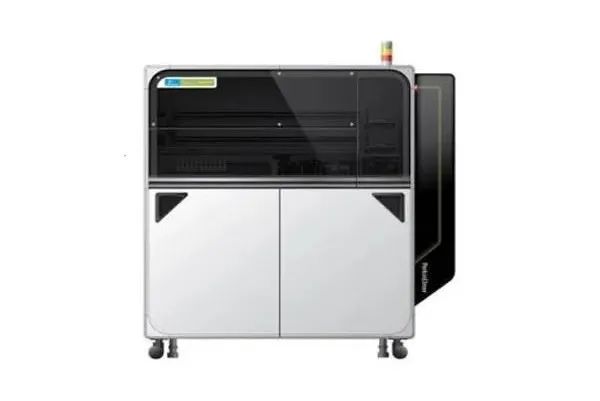

Click the blue text above to follow us!
Source: Xianji Network, Huoshi Creation, IVD Raw Material Network


Single Photon Counting Module

The single photon counting module is the core key component of chemiluminescence immunoassay, used to count the weak photons generated by chemiluminescent reagents. Currently, the annual consumption in China is about 10,000 units, with a unit price of 6,000-10,000 yuan. Currently, only Shenzhen New Industry Bio and Shenzhen Mindray purchase photomultiplier tubes (priced at about 2,000-2,500 yuan/unit) and develop circuits to form single photon counting modules; other companies need to procure externally, and the market is almost entirely monopolized by Japan’s Hamamatsu.

Concave Plane Grating

The concave plane grating is a core key component of high-end fully automatic biochemical analyzers, used for generating post-spectral monochromatic light. Currently, manufacturers producing high-end fully automatic biochemical analyzers in China (Shenzhen Mindray, Changchun Dirui, Shenzhen New Industry) are all using concave plane gratings from Japan’s Shimadzu. Ningbo Yuanlv Optoelectronics Co., Ltd. has also achieved production of concave plane gratings, but due to price and quality reasons, it has not been recognized by major domestic biochemical analyzer manufacturers.

Laser

The laser is an important key component of flow cytometers, flow particle fluorescence analyzers, digital PCR, and high-end five-part blood analyzers, used to produce a stable and narrow light source for illuminating or exciting the detection object, thus forming a detection signal. Currently, high-end flow cytometers and other instruments adopt products from Coherent, USA, priced at 30,000-40,000 yuan/unit. Suzhou Weilin Optoelectronics Co., Ltd. has been able to produce high-performance lasers at a price of about 20,000 yuan/unit, which is only about half of the imported products, gaining use from some domestic manufacturers.

Image Source:PerkinElmer EasyCuta MINI Automated Time-Resolved Fluorescence Analyzer

Sample Needle

The sample needle is an important key part of high-end fully automatic biochemical analyzers and fully automatic chemiluminescence immunoassay analyzers, used to draw micro-samples (as low as 1ul) into reaction cups. The sample needle is a key component of a series of devices, and its quality directly affects the overall performance indicators of the instrument. Currently, domestic high-end biochemical analyzers and chemiluminescence analyzers all rely on imports for sample needles, with main suppliers being Japan’s Ito Seisakusho, Japan’s Takasago, and Switzerland’s UNIMED. Shenzhen Wancheng Technology and Shenzhen Zhongke Kangsen Ruite are also working on sample needles, but due to performance reasons, they have not yet been applied in domestic high-end instruments.

Plunger Pump

The plunger pump is a key component of fully automatic biochemical analyzers and fully automatic chemiluminescence immunoassay analyzers, mainly used to draw samples and reagents. Currently, domestic high-end in vitro diagnostic products mostly use plunger pumps from IDEX, USA, priced at 1,500-2,000 yuan/unit. In recent years, Shenzhen Kento, Shenzhen Hengyongda, and Dongguan Jurui have developed and mass-produced plunger pumps with good performance, which have been applied in some products of well-known domestic in vitro diagnostic companies.

Valve-less Plunger Pump

The valve-less plunger pump is an important key component of fully automatic chemiluminescence immunoassay analyzers, mainly used to pump the substrate into the reaction cup. The main manufacturer of valve-less plunger pumps is Japan’s IWAKI, priced at about 2,000 yuan/unit. Last year, Dongguan Xinano developed a valve-less plunger pump, which has been tested in some companies’ products, but has not yet been used in large quantities.

Electromagnetic Valve

The electromagnetic valve is a key component of fully automatic biochemical analyzers, fully automatic chemiluminescence immunoassay analyzers, and five-part blood analyzers, mainly used for switching and controlling liquid flow, and its performance directly affects the overall performance of the machine. Currently, high-end products’ electromagnetic valves are still mainly imported brands, including Germany’s Burkert and Japan’s SMC, priced at 500-1,000 yuan/unit. Shenzhen Kento has made rapid progress in recent years, and the electromagnetic valves they developed and mass-produced have been applied in many domestic in vitro diagnostic companies’ products.

Sheath Flow Cell

The sheath flow cell is a key component of fully automatic five-part blood cell analyzers, flow cytometers, and flow particle fluorescence analyzers, mainly used to generate sheath flow and detection areas, with an annual demand of about 40,000 to 50,000 units. Currently, it mainly relies on imports from Germany’s Hellma and Japan’s Japan Cell. Currently, domestic optical device processing companies are investing in the product development of flow cells, with mass production achieved by Fuzhou Gaoyi Technology and Fuzhou Rongde Optoelectronics Technology. The former has an exclusive cooperation with Mindray for development and generally does not sell to other domestic blood analyzer manufacturers; while Fuzhou Rongde Optoelectronics has only had products appear in the last two years, and the manufacturers’ usage is still in the sample verification stage and has not been used in large quantities. Due to the processing technology of flow cells from quartz glass blanks to finished products involving dozens of processes, most key processes rely on skilled technicians, leading to poor process stability and high defect rates. Currently, the precision of domestic products is inferior to imported flow cells, resulting in their general use only in low-end five-part blood analyzers, not suitable for high-demand mid-to-high-end products.

IVD instruments are interdisciplinary fields that integrate high-speed automation, precision optics, non-standard structures, integrated circuits, fluid mechanics, and biology. At the same time, the personnel developing in vitro diagnostic instruments mostly come from other electronic instrument industries in the initial stage, and their training for the development of interdisciplinary instruments like diagnostic instruments is not systematic enough, and they are not familiar with relevant laws and regulations.
Therefore, only a few leading companies have the strength to develop large-scale supporting instruments corresponding to reagents, while the development of IVD instruments by small and medium-sized manufacturers mainly focuses on small or lower-automated POCT instruments.
Currently, the lack of production capacity for core components domestically is mainly due to the processing technology not achieving sufficient precision.
END

Long press to joinKnowledge Planet
Break through the fog,Illuminate the future

Long press to identifyCustomer Service WeChat
AddFriend,Invite you to join the group
Hotline: 4008-0571-82
Email: [email protected]
The views expressed in the articles reproduced on this site only represent the original author’s views. If there is any infringement, please contact for deletion!

Share

Collect

Like

View